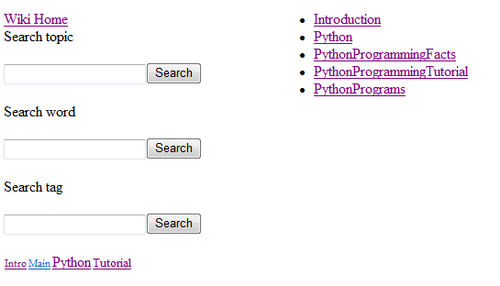The opening screen of the wiki application shows a list of all defined topics on the right and several ways to locate topics on the left. Note that it still looks quite rough because, at this point, we haven't applied any style sheets:

Let us first take a few steps to identify the underlying structure. This structure is what we would like to represent in the HTML markup:
Identify related pieces of information that are grouped together. These form the backbone of a structured web page. In this case, the search features on the left form a group of elements distinct from the list of topics on the right.
Identify distinct pieces of functionality within these larger groups. For example, the elements (input field and search button) that together make up the word search are such a piece of functionality, as are the tag search and the tag cloud.
Try to identify any hidden functionality, that is, necessary pieces of information that will have to be part...



